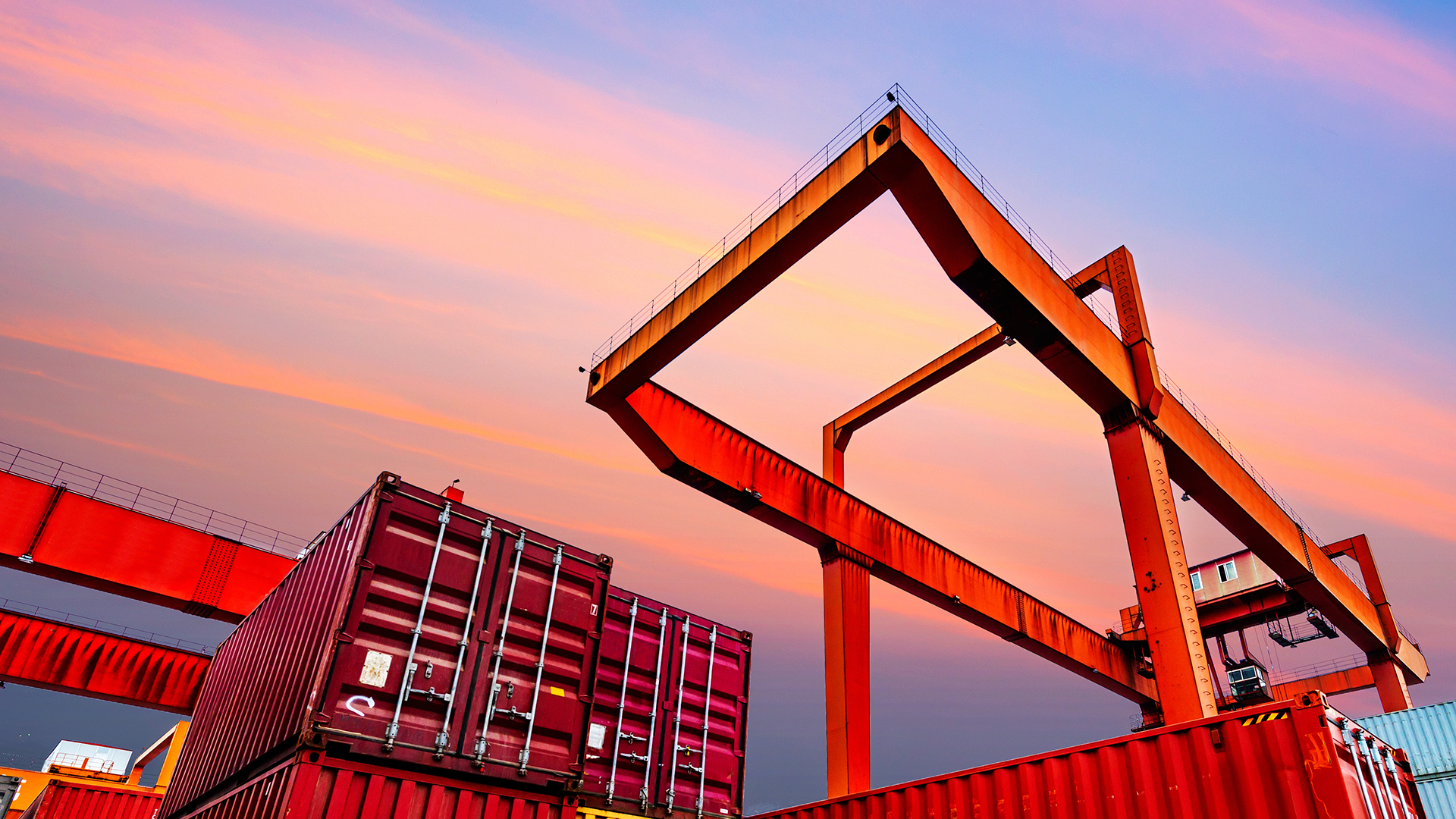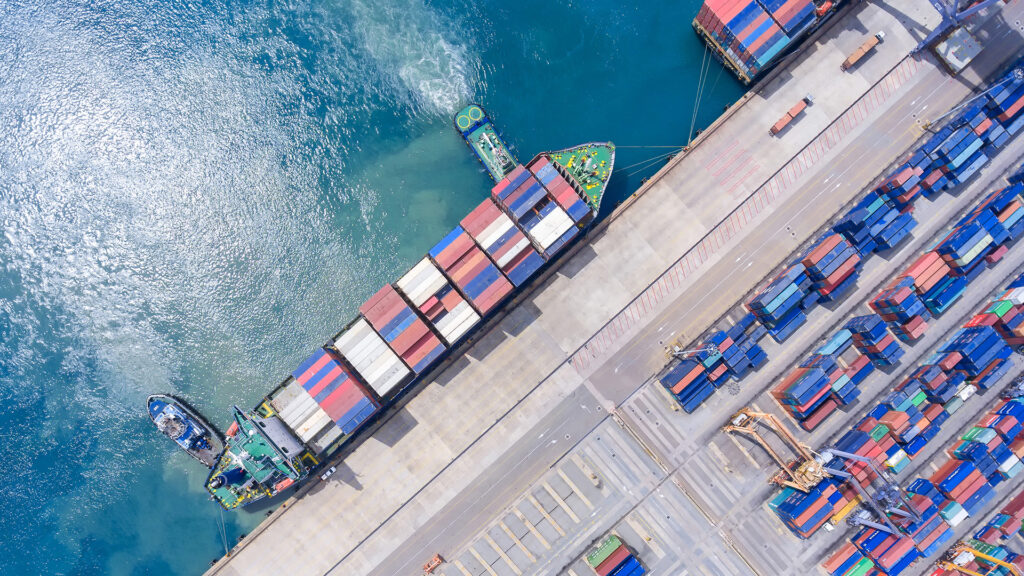

China Reacts to USTR Section 301 Port Fees With “Special” Port Fees on U.S. Ships
On 10 October 2025, the PRC’s Ministry of Transport announced that special port service fees will be imposed on U.S. ships calling at Chinese ports with effect from 14 October 2025 – the same date the port fees imposed by the Trump Administration under section 301 of the U.S. Trades Act 1974 come into force. In this Insight, we discuss the impact of this announcement and key questions which have emerged.
Background
As explained in more detail in our Insight of April 2025, on 17 April 2025 the United States Trade Representative (USTR) formally announced1 the adoption of a suite of fees and trade restrictions under Section 301 of the U.S. Trade Act of 1974 (Section 301 Actions).
The aim of the Section 301 Actions was to target “unreasonable or discriminatory” policies and practices which “burden or restrict U.S. commerce“.
Although the global international shipping industry was targeted by the Section 301 Actions, the USTR had determined that the People’s Republic of China (PRC) was “targeting the maritime, logistics, and shipbuilding sectors for dominance” and certain measures focussed specifically on the Chinese maritime and shipbuilding sectors: additional port fees (a “service fee“) for:
- vessels operated by or owned by Chinese entities (including Hong Kong and Macau); and
- operators of Chinese-built vessels;
which enter U.S. ports (USTR Port Fees).
The USTR Port Fees are due to come into force on 14 October 2025.
The PRC’s Announcement
On 10 October 2025, the Ministry of Transport of the PRC (Ministry) announced that, with effect from 14 October 2025, “special” port service fees will be imposed on U.S. ships calling at Chinese ports (Chinese Port Fees)2.
In the early hours of 14 October 2025, the Ministry issued the Implementation Measures3, which further explains the application and scope of the Chinese Port Fees.
The Chinese Port Fees come into force on 14 October 2025 – the same date as the USTR Port Fees – and were described by the Ministry’s spokesperson as “countermeasures” imposed by the Ministry as a result of the Section 301 Actions, including the USTR Port Fees4 and “a legitimate measure to safeguard the legitimate rights and interests of Chinese shipping enterprises“5.
The Chinese Port Fees Regime
1. Ships covered – The following categories of ships are covered by the Announcement:
- ships owned by U.S. enterprises, other organisations and individuals;
- ships operated by U.S. enterprises, other organisations and individuals;
- ships owned or operated by enterprises or other organisations in which U.S. enterprises, other organisations and individuals directly or indirectly hold 25% or more of the shares (voting rights, board seats);
- ships flying the U.S. flag; and
- ships built in the U.S.
Exemptions – The following ships are exempted:
- ships in categories (a) – (d) above which were built in China;
- ballast ships entering Chinese shipyards for repairs; and
- ships that are otherwise granted exemptions from the Chinese Port Fees.
2. Port Fees calculation – Initially, the Chinese Port Fees will be imposed at a rate of RMB 400 per net ton, gradually increasing to RMB 1,120 per net ton in 2028.
| Commencement Date | RMB (Yuan) per net ton (or part thereof) per voyage |
|---|---|
| 14 October 2025 | 400 |
| 17 April 2026 | 640 |
| 17 April 2027 | 880 |
| 17 April 2028 | 1,120 |
Notes:
- If a ship calls at multiple Chinese ports in the same voyage, the fee is payable on a per voyage basis and only at the first port of such calls (so no fee is payable for stops at subsequent ports during the same voyage).
- There is an annual cap for ships making multiple voyages to Chinese ports. A single ship will be charged a maximum of five voyages per year (with a “year” being the 12 months starting on 17 April each year).
These limits are similar to the provisions in the USTR Port Fees regime6.
3. Reporting and payment – At least 7 days before arrival at the Chinese port (or upon departure from the previous port, if the transit time is shorter than 7 days), “ships” or their agents must report the following details to the local maritime authority and pay the Chinese Port Fees:
- country of build;
- flag state;
- information of the owner, operator and leasing status; and
- the intended Chinese ports of call.
Notes:
- It is notable that neither the Announcement nor the Implementation Measures specify who connected with “ships” (owners / charterers / managers?) has the reporting and / or payment responsibility.
- The maritime authorities will verify the reported information. If any false, missing, or misleading information is being found, “ships” or their agents will be required to provide additional information.
4. Failure to pay – Failure to pay the Chinese Port Fees will result in denial of port entry / exit clearance. Ships that depart without settling the Chinese Port Fees, must settle all unpaid port fees before the next call at a Chinese port.
Questions arising from the Announcement
Despite the additional details set out in the Implementation Measures, several key questions remain, including:
- What constitutes “US enterprises, other organisations and individuals“? What constitutes “U.S.-based“? When applying the USTR Port Fees regime, the U.S. has looked beyond a company’s place of incorporation. We expect that the Ministry will take a similar approach and that other forms of registration and business presence and / or economic substance will be relevant factors when assessing the applicability of the Chinese Port Fees regime.
- What legal definitions and criteria will be applied by the Ministry to identify ships which are “owned” or “operated” by U.S. entities / individuals? How will the 25% threshold be measured? Clarification on this point will be particularly important for ships owned or operated by large conglomerates with complex corporate structures.
- How will the Chinese authorities deal with ships operated under different types of chartering arrangements? This requires analysis of the nature and terms of the chartering and the relevant parties involved. In this regard, one would have to look at different aspects of operation, including technical and commercial aspects, which may vary on a case-by-case basis, especially in time chartering situations.
The Implementation Measures states that the Ministry will be responsible for its interpretation7 and we anticipate that further interpretation or guidance on the coverage of the Chinese Port Fees regime is likely to be provided in due course.
Given the global trade and political landscape at present, and the clear indication that the Chinese Port Fees regime will be “dynamically adjusted“8 by the Chinese authorities, this is an evolving situation. HFW is closely monitoring this topic and will publish further Insights in due course.
What’s next for port fees and the Chinese maritime Industry?
In their statement on 10 October 2025, the Ministry’s spokesperson urged the U.S. to “immediately correct its wrong practices and stop its unreasonable suppression of China’s maritime industry“9.
On 14 October 2025 (the same date as the publication of the Implementation Measures), the Ministry announced the launch of an investigation into, amongst other things, “whether the safety and development interests of [China’s] shipping industry, shipbuilding industry and related industrial chains and supply chains are affected or may be affected by the US 301 investigation” (U.S. Investigation)10.
It is not clear how the U.S. will respond to the Announcement and the launch of the U.S. Investigation, but the President of the PRC and the President of the U.S. are widely expected to meet while attending an Asia-Pacific Economic Cooperation forum in South Korea at the end of October. The Announcement and other trade-related matters (for example tariffs, agricultural exports and rare earth minerals) are likely to be high on the agenda but whether diplomatic efforts will result in changes to either port fees regime remains to be seen.
Contact Us
HFW is closely monitoring developments in this area and the associated “tariff wars” which are affecting the Shipping and Commodities sectors and global supply chains. You can read Insights on related topics on our website:
- How USTR measures affect the global shipping market, April 2025
- Tariffs 101, April 2025
- Sea freight – weathering the storm of uncertainty, June 2025
- US tariffs, sanctions and Commodities, July 2025
- US tariffs, sanctions and sale contracts, September 2025
- USTR Port Fees: Updates, Clarifications and Proposed Modifications, October 2025
Should you have any questions about port fees or require any legal advice, please reach out to the authors of this insight, or your usual HFW contact(s).
Disclaimer: Holman Fenwick Willan LLP is licensed to operate as a foreign law practice in the PRC. Where advice on Chinese law is required, we will refer the matter to and work with licensed Chinese law practices.
Footnotes:
- Notice of Action and Proposed Action in Section 301 Investigation of China’s Targeting the Maritime, Logistics, and Shipbuilding Sectors for Dominance, Request for Comments, Office of the USTR, Vol. 90, No 77 of the U.S. Federal Register.
- Announcement of the Ministry of Transport on the Collection of Special Port Fees for U.S. Ships – Government Information Disclosure, issued 10 October 2025 (Announcement).
- General Office of the Ministry of Transport Notice on Issuing the Implementation Measures for the Collection of Special Port Service Fees on U.S.-Linked Vessels – Government Information Disclosure, issued 14 October 2025 (Implementation Measures).
- The spokesperson of the Ministry of Transport answered reporters’ questions on the proposed collection of special port fees for ships in the United States, issued 10 October 2025 (Press Q&A).
- Press Q&A, paragraph 2 of answer to question 1.
- For more details, please refer to our Insight of April 2025.
- Implementation Measures, numbered paragraph 10.
- Implementation Measures, numbered paragraph 9.
- Press Q&A, paragraph 2 of answer to question 1.
- Announcement of the Ministry of Transport on Launching an Investigation on the Impact on the Security and Development Interests of the Shipping Industry, Shipbuilding Industry and Related Industrial Chains, issued 14 October 2025.













